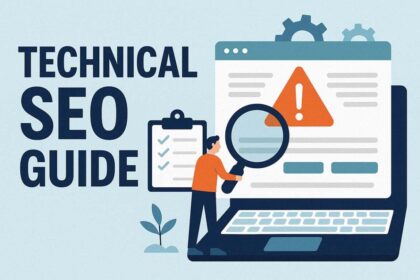In an era where smartphones have transcended mere communication devices to become our primary portal to the digital world, the importance of mobile SEO has never been more critical. Welcome to a landscape where the thumb rules—quite literally—dominate user experience, and search engines have evolved to prioritize mobile responsiveness over traditional desktop interfaces. As more consumers turn to their devices for information, shopping, and entertainment, the urgency for businesses to adapt their digital strategies has escalated. In this article, we will explore the essential strategies to unlock the potential of mobile SEO, guiding you through the nuances of optimizing your content, enhancing user engagement, and ultimately thriving in a mobile-first environment. Join us on this journey to ensure your online presence not only fits into the palm of users’ hands but stands out in an increasingly competitive digital space.
Understanding Mobile User Behavior and Intent
In the ever-evolving landscape of mobile technology, understanding the way users interact with their devices is paramount. Mobile users tend to be highly task-oriented, often seeking quick answers or solutions rather than engaging in prolonged browsing sessions. This behavior is characterized by the following factors:
- Speed: Users expect fast loading times, with many abandoning sites that take more than a few seconds to display content.
- Accessibility: With smartphones and tablets readily available, users typically search for information on-the-go, increasing the need for mobile-friendly designs.
- Local Intent: Many mobile searches are locally focused. Users frequently look for nearby services or products, indicating a strong intention to make immediate purchases.
Moreover, recognizing user intent is crucial for structuring content that resonates with mobile audiences. Mobile searchers often fall into distinct categories based on their intentions, which can be summarized in the following table:
| User Intent Type | Description |
|---|---|
| Informational | Users seek answers to questions, tutorials, or general information. |
| Transactional | Users are ready to make a purchase and require product details or reviews. |
| Navigational | Users search for specific websites or businesses. |
By adapting to these insights, marketers can develop targeted strategies that effectively meet the needs of mobile users, ensuring that their content not only reaches but also engages the audience effectively.

Optimizing Website Performance for Mobile Accessibility
To ensure optimal performance on mobile devices, implementing a responsive design is essential. This approach not only adjusts the layout depending on the screen size but also enhances user experience across various devices. Key strategies to consider include:
- Image Optimization: Use formats like WebP and ensure images are appropriately sized to reduce loading times.
- Minification: Compress CSS and JavaScript files to decrease their load size, speeding up rendering on mobile devices.
- Content Delivery Network (CDN): Leverage a CDN to serve your website’s content from the nearest server to reduce latency.
Another critical factor in improving mobile accessibility is ensuring fast loading times. Pages that load within three seconds have higher engagement rates, reducing bounce rates significantly. Consider implementing:
| Strategy | Benefit |
|---|---|
| Lazy Loading | Images load only when they’re in the viewport, improving initial load times. |
| Reduce Redirects | Minimizes extra HTTP requests, aiding speed. |
| Mobile-Friendly Testing | Regular testing to ensure full functionality and speed on different devices. |

Leveraging Local SEO Strategies for Mobile Engagement
In today’s fast-paced digital landscape, businesses must ensure they are easy to find for local customers accessing information through their mobile devices. Adopting targeted local SEO strategies can significantly enhance your mobile engagement efforts. Focus on optimizing your Google My Business (GMB) listing by ensuring that your business name, address, and phone number (NAP) are consistently displayed across various platforms. Additionally, include relevant local keywords in your website content and meta descriptions to help search engines understand your geographic relevance. Consider creating location-specific landing pages that cater to your target audience’s needs, showcasing local events, offers, and services that resonate with them.
Mobile users typically seek quick, easily digestible information. To cater to this behavior, optimize your website for fast loading times and mobile-friendly navigation. Employ structured data markup to improve how your business appears in local search results, enhancing snippets with vital information. Utilize the following tactics to boost local mobile engagement:
- Local Reviews: Encourage satisfied customers to leave positive reviews on your GMB and other local directories.
- Geo-targeted Ads: Use location-based advertising to reach potential customers within your vicinity.
- Mobile-Optimized Content: Create concise, engaging content that answers local queries quickly.
| Strategy | Benefit |
|---|---|
| Optimizing GMB | Increased visibility in local searches |
| Structured Data | Enhanced search result appearance |
| Local Reviews | Building trust with potential customers |

Crafting Mobile-First Content that Captivates and Converts
In a world where mobile devices dominate online interactions, creating compelling content is essential to engage your audience. Structure your text in bite-sized sections to cater to the preference for scannable content, emphasizing key points with bold text or bullet points. Use clear headings and subheadings to break your content into digestible pieces, guiding readers through the narrative seamlessly. Also, consider employing rich media—like images and videos—that reinforce your message and lure users into deeper engagement. A carefully crafted mobile-first experience ensures that every visual element enhances the written content rather than distracts from it.
Additionally, leveraging user-generated content can serve as a powerful tool in your strategy. Encourage reviews, comments, and social media shares to create a sense of community around your brand. Integrating these elements can highlight authentic engagement, fostering trust and encouraging conversions. To ensure a cohesive experience, be mindful of your loading times; optimizing your images and scripts can significantly reduce bounce rates. Remember, a captivating mobile-first experience doesn’t just capture attention—it drives users toward taking action.
Closing Remarks
In the ever-evolving landscape of digital marketing, where the majority of users navigate the web through their mobile devices, understanding and implementing effective mobile SEO strategies is no longer optional—it’s essential. As we’ve explored throughout this article, optimizing for mobile requires a harmonious blend of user experience, innovative design, and technical expertise.
By embracing a mobile-first mindset, businesses can not only improve their search visibility but also foster deeper connections with their audiences. The strategies discussed, from responsive design to accelerated mobile pages (AMP), are your keys to unlocking a more engaging and accessible online presence.
As you embark on this journey, remember that the world of mobile is dynamic. Staying informed and adaptable will be critical to your success. So, gear up for the challenges ahead, and continue to refine your approach as technology and user behavior evolve. In this fast-paced mobile-first world, those who innovate and adapt will undoubtedly lead the way. Thank you for joining us on this exploration of mobile SEO; may your efforts lead to greater visibility and engagement in the palm of every user’s hand.


